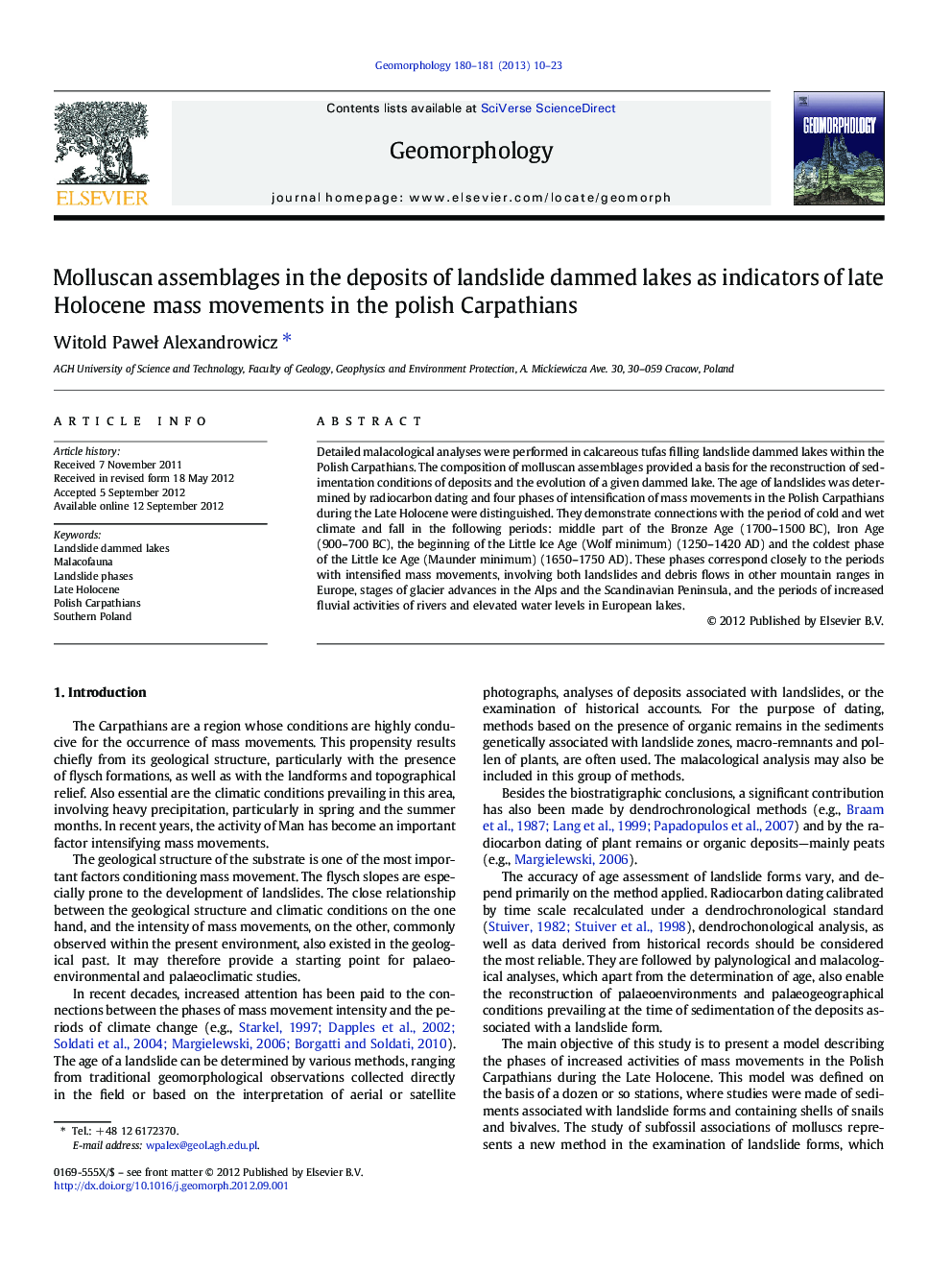| Article ID | Journal | Published Year | Pages | File Type |
|---|---|---|---|---|
| 4685002 | Geomorphology | 2013 | 14 Pages |
Detailed malacological analyses were performed in calcareous tufas filling landslide dammed lakes within the Polish Carpathians. The composition of molluscan assemblages provided a basis for the reconstruction of sedimentation conditions of deposits and the evolution of a given dammed lake. The age of landslides was determined by radiocarbon dating and four phases of intensification of mass movements in the Polish Carpathians during the Late Holocene were distinguished. They demonstrate connections with the period of cold and wet climate and fall in the following periods: middle part of the Bronze Age (1700–1500 BC), Iron Age (900–700 BC), the beginning of the Little Ice Age (Wolf minimum) (1250–1420 AD) and the coldest phase of the Little Ice Age (Maunder minimum) (1650–1750 AD). These phases correspond closely to the periods with intensified mass movements, involving both landslides and debris flows in other mountain ranges in Europe, stages of glacier advances in the Alps and the Scandinavian Peninsula, and the periods of increased fluvial activities of rivers and elevated water levels in European lakes.
► Malacological analysis of sediments of the dammed lakes was performed. ► The molluscs found provided a basis for reconstructing environmental changes. ► Radiocarbon dating enabled determination of the age of landslides. ► Four phases of intensification of mass movements were distinguished. ► Phases corresponds to the cold or wet climatic periods during the Late Holocene.
